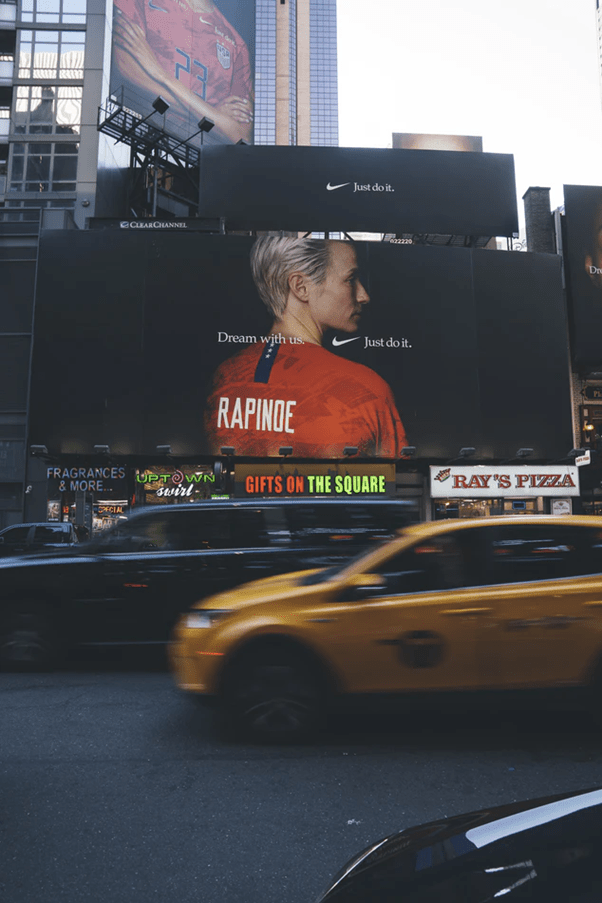A variety of characteristics constitute great copywriting, all of which are essential to understand for anyone considering copywriting as a career option.
From the need to keep your message concise, informative, and emotive while delivering it in the appropriate tone to why you should consider incorporating images to enhance your message and why keeping up with pop culture is essential.
Here you’ll discover the seven secrets to successful copywriting, which can improve the quality of your material and your entire reputation as a copywriter almost right away. By following these secrets, and continuing to practice copywriting techniques, you’ll become a much more powerful and persuasive scribe.
1. Don’t Shy Away from Simplicity
Get to the point, and quickly.
Reduce your word count by avoiding fillers and fluff. Cutting to the chase and decreasing your word count results in more natural and free-flowing content. The reader’s attention is maintained by brevity.
Keeping content short and concise doesn’t mean you have to leave out important information or emotion. It just means choosing the right words and crafting them together seamlessly.
You also need to focus on your font selection and typography design, making sure that the font you select reflects your branding.
Write your copy, then take out anything unnecessary and keep doing so until it’s perfect. By “trimming the fat,” your message is clear and engaging; crucial elements of great copywriting.
Getting right to the point in the simplest possible way, very quickly, is exactly what Py For Work does on their website: “Hire Better Engineers, Faster.” Catering to the tech industry with no jargon and bulk, they make clear their service offering to grip the reader.
Nobody wants to be bogged down with waves of text; just tell the reader what you do. For example, Harry’s “Shave Sets – All you need to start shaving, in one tidy box.” Mission accomplished.
Another example of a powerful, simple copy; Ronseal – “Does exactly what it says on the tin.”
2. Get The Tone Right
Aligning the appropriate tone to the brand is critical.
Wise-crack copywriting would be out of place on a sophisticated personal brand. A high-end designer brand known for refinement and flair, on the other hand, is unlikely to use street talk.
Spirit Airlines in the United States got into a lot of difficulty with a 2010 advertising that made a not-so-subtle reference to the BP oil spill, which was a catastrophic environmental disaster.
The print ad included an illustration of a woman on a beach coated in suntan oil, asking readers to “Check out the Oil on Our Beaches” and book vacations to Ft. Lauderdale. There also featured a bottle of “Best Protection” (BP) sunscreen for added measure.
While the bold copywriting sparked much debate, many people thought it matched perfectly with Spirit Airlines’ edgy and humorous image. Spirit was able to achieve public empathy in their plight to defend themselves in a way that a more corporate brand could not.
Imagine the brand as a person and speak as that person.
Pillsbury, for example, is a much-loved homely brand, and they convey that tone within all of their copywriting, especially when coupled with the lovable Poppin’ Fresh Pillsbury Doughboy’s giggle when he’s poked in the belly.
3. Give It Feeling
Great copywriting is arguably more about the feeling than the words themselves.
The purpose of their use is to invoke emotion in one way or another, and emotions influence what people buy.
Antonio Damasio, a professor of neurology at the University of Southern California, argues in his book Descartes’ Error that emotion is a necessary component of practically all judgments.
According to advertising studies, consumers’ emotional response to an ad has a 3-to-1 influence on their reported intent to buy a product over the ad’s content for television commercials and 2-to-1 for print ads.
Burger King may not spring to mind as a particularly emotive brand; however, “Have it your way” means the consumer feels understood; that not everybody wants a burger with everything on it.
That feeling of not having to fit within the expected ‘norm’ drives enthusiasm for the brand.
The children’s charity Unicef stands for “For Every Child in Danger.” What a great way to get the audience’s emotions going.
They could have taken a more upbeat tone and said something about what they do, but it’s the emotion of seeing children in danger that motivates people to donate.
Consider the intended audience’s suitable vocabulary. Words with a rough tone, such as smash and blast, generate a sense of haste and ardent enthusiasm. Words like bop and bang, on the other hand, use a more gentle approach while still encouraging people to participate.
4. Drive Action
Remember that you’re a salesperson as well as a wordsmith. What’s the point of copy if it can’t get people to take action and generate leads?
Nike, for example, strives to energize and motivate its audience to increase sales. With “Just Do It” as their tagline, any further copywriting becomes instantly positive and inspired.
This is ideal for them as a sports brand and actively encourages the target market to, well, just do “it” – their chosen sport or activity – while letting Nike take care of their kit.
The tagline “See what’s next” belongs to Netflix, which elicits the binge-watching instinct in all of us. The greatest call to action you can achieve is something simple and brilliant.
5. Don’t Try Too Hard
Overthinking is a primary contributor to copywriting failure. Because it’s a creative skill, you won’t be able to push the boundaries into something amazing if you overthink it.
Be decisive.
Copywriters often have a lot of wonderful ideas and want to utilize them all in one post/ad/project.
Still, you have to remember not to overkill it, picking the most powerful statement or idea.
Don’t let the desire to showcase your talents get the best of you. The copy doesn’t always have to be clever; it just has to be retail-oriented. Make sure you’re offering exactly what the client or project needs rather than attempting to be too innovative.
When Dominic Cummings, the Prime Minister’s advisor, broke UK lockdown rules in 2020 by traveling to Barnard Castle from his home address, the excuse was ‘to check his eyesight. Specsavers’ media mentions sky-rocketed.
Why?
Not because of what the brand did or said themselves, but because such great copywriting had already been done, and their tagline “Should’ve gone to Specsavers” is a phrase commonly used.
You can’t get a more simple message, and this one-liner is a shining example of not over-thinking an idea for a brand.
The Chief Marketing Officer for Specsavers Global, Katherine Whitton, made a comment ‘We’re known for our quick and humorous responses to all sorts of situations, but the public’s speed and ingenuity in responding to the Cummings affair left us standing.”
We love the fact that the Great British public feels a real sense of ownership of ‘’Should’ve’’ and instantly thought of us when it came to eye tests.”
6. Work With The Visuals
It’s not only about the content in great copywriting; it’s also about the pictures that go with it. An image and vice versa can sometimes carry a copy.
Memes are an excellent example of this.
Just as emojis have become commonplace in digital communication, there are instances when there aren’t enough words to convey the tone or feeling you desire while being concise.
Make use of visuals to complete your message. Use tools like Visme, Vectornator, and Canva to get create eye-catching graphics and visuals.
In 2018 KFC UK had a chicken shortage. While taking responsibility and apologizing via a short paragraph conceding that it wasn’t the best scenario, an image of the KFC bucket was the main focus of the apology; only KFC was jumbled to read FCK.
Incredible copywriting, salvaging their reputation and generating positive publicity despite the dilemma they faced.
7. Stay On Top Of Pop Culture And News
Connect with your audience, stay relevant, and add a sense of wit about your brand.
Twitter is full of excellent examples from brands packing a punch with agile marketing. Within minutes of the Superbowl power outage in 2006, Oreo tweeted, “You can still dunk in the dark.” It’s true, incredibly fast, and so very relevant.
Power out? No problem. pic.twitter.com/dnQ7pOgC
— OREO Cookie (@Oreo) February 4, 2013
Norwegian Airlines released an ad two days after Angelina Jolie announced she had filed for divorce from Brad Pitt; it simply said, “Brad is Single. Los Angeles From/One way £169”.
Great bit of advertising by #NorwegianAir – had already crossed my mind actually pic.twitter.com/F5tS24W2EF
— Red Breast Productions (@redbreastfilms) September 22, 2016
Both of the above examples are classic examples of why staying relevant and on top of the news is critical for great copywriting.
To understand more about good copywriting and how it’s changing, read articles like these from Entrepreneur.com on a regular basis, keep track of which brands are becoming viral on Twitter owing to real-time marketing, and scribble down your thoughts.
It makes no difference whether you use them now or in 18 months. Any thought that comes to a creative mind will almost always result in excellent copywriting.
The exact recipe for successful copywriting will evolve over time, but the principles will always be key.
Don’t be anxious that you’re not innovative enough; sometimes, without overthinking everything, simplicity is all that’s required.
Always remember to include a call to action in your content where possible, and keep in mind that the overall goal is to elicit emotion, whether angry, joyful, or hungry.












0 Comments